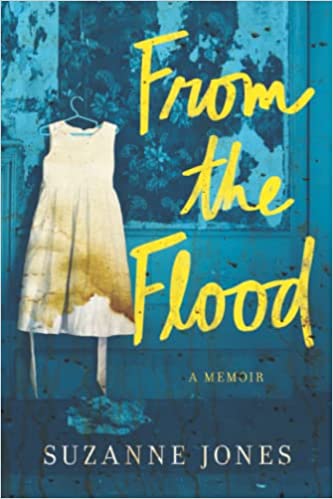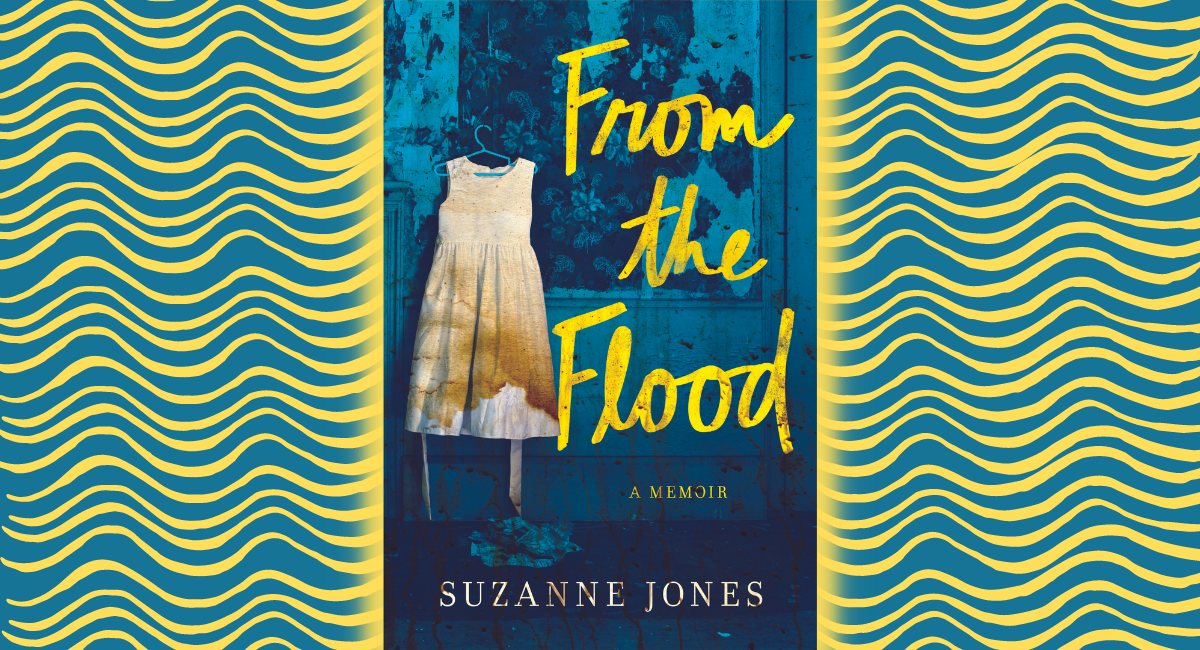From the Flood: A Memoir by Suzanne Jones
Fifty years ago in June of 1972, Agnes, one of the most devastating storms in hurricane history, caused record damage across large swaths of the eastern United States. In Pennsylvania, up to 19 inches of rain fell, rivers overflowed and more than 200,000 residents lost their homes. Of the estimated $3.1 billion in damages from Agnes, $2.1 billion was in Pennsylvania. The damage was so extensive, Agnes was the first of only three hurricane names to be forever retired from use again.
Among the homeless was Suzanne Jones, whose new memoir, From the Flood (LAKE Publications), is an account of survival and resilience. Jones was seven when Agnes hit, and her family lived close to the flood-prone Susquehanna River in Wilkes-Barre, an old anthracite coal town and a cultural and economic center in northeastern Pennsylvania.
A CHILD’S TAKE ON A NATURAL DISASTER
Her story is told in the first person by her childhood self. Everyone calls her Suzie, “except for sometimes Mom called me Suzanne, especially when I was in trouble.” Her sister, Pam, is a year older and sibling rivalry is constant. “Pam was the first to do everything, so nothing was as special for me because I was always second.” Their baby brother, Paul, is a lovable “terrible two.”
“The rain did not start gradually,” writes Jones. It began “like a faucet turned all the way on high, soaking Pam, me, the swing set, and the whole yard with water.” The next day, her family left their house with one change of clothes (and one toy for each child) to spend the night with the large extended Lebanese family of Suzie’s father’s printing business partner, who lived on a higher ground out of the flood zone.
A JARRING YET NOSTALGIC ACCOUNT
As the Susquehanna overflows its banks, and the news is nothing but emergency alerts and dire warnings, Suzie’s parents limit their children’s awareness of events. Jones contrasts her parent’s worries about food, clothing and shelter with her childhood memories of finding new friends, adventures and new extended families they move from place to place.
It’s not exactly Lord of the Flies, but From the Flood paints a vivid, often humorous picture of children left to their own devices to roam outdoors in ravines and woods and places they were told not to go.
For Suzie’s parents, happiness was another matter. “Dad had definitely changed,” writes Jones. “He was only thirty-one years old, but after spending months in the belly of the flood zone — hauling, hosing, and scraping mud, saving what little he could, and throwing away almost all of what he had built for himself and his family, he seemed decades older.” He was able to save his business, but not his family’s home.
The arc of how the flood changed Suzie’s mother is too much of a spoiler to reveal. Suffice it to say, she met new friends who were independent women. She learned a lot from them.
It took three years for the Jones family to find another forever home, a house that had been restored “from the flood.”
A NECESSARY BOOK — FOR THE WRITER AND HER READERS
Now a trauma recovery specialist, Jones became compelled to write her book when she realized how her memories of the flood and the years that followed were drastically different from those of her parents. “Ironically, the best years of my childhood were the worst years for my parents,” she writes.
“The Flood of ’72 did not leave a trauma imprint on me and my siblings,” she said recently. “What I learned from the years after the flood is that when children have the right conditions — community, adults who let them be kids, and the use of play to navigate through difficult life events (like our games of ‘house’) — they can remain pretty unscathed after it’s all over.”
From the Flood is Jones’s second book, as well as a powerful recounting of natural disasters, childhood resilience, positive parenting and the fostering of safe environments — where it hardly seems possible to have one. Her first book, There Is Nothing to Fix: Becoming Whole Through Radical Self-Acceptance (LAKE Publications), is a guide to finding self-compassion, inner strength, and positive relationships.
About Suzanne Jones:
Suzanne Jones is an expert in the field of trauma recovery through somatic methods. She has presented workshops and talks at Omega Institute, Kripalu, mental and behavioral health facilities in the greater Boston area, and national conferences. She has been profiled on CNN and in Yoga Journal, the New York Times, Shape, and Whole Living, and she’s been interviewed by author Rick Hanson for his Foundations of Well-Being online course.
Jones founded the TIMBo Collective (formerly called yogaHOPE) in 2006 and developed the TIMBo program for transforming trauma in 2009. Since its launch, her program has been delivered to over four thousand women in the U.S., Haiti, Kenya, and Iran and helped transform client care at organizations in Massachusetts; Washington, DC; and Georgia, serving women overcoming homelessness, addiction, and domestic violence.
Jones also writes a blog for the TIMBo Collective and Elephant Journal. There Is Nothing to Fix was her first book, followed by From the Flood.




